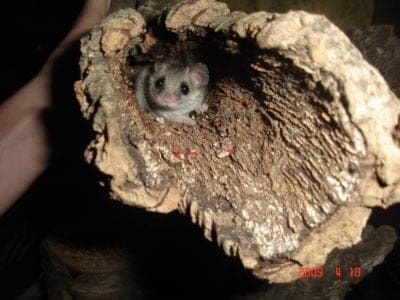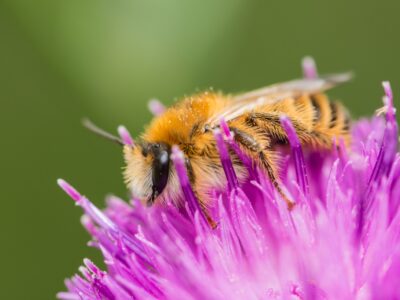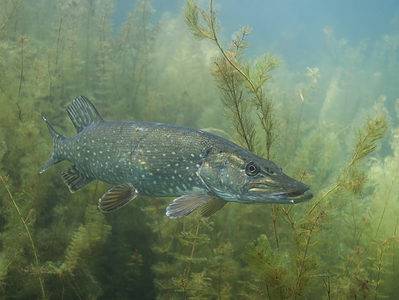Below you can find a complete list of Austrian animals. We currently track 248 animals in Austria and are adding more every day!
Austria is a small landlocked country that sits near the center of Europe. In pre-modern times, it was once the seat of the Holy Roman Empire and the Austrian-Hungarian Empire. Geographically, the country shares a land border with Germany, Switzerland, Italy, Slovenia, Slovakia, Hungary, and the Czech Republic.
Most of the country’s biome is completely dominated by mountains, forests, and the foothills of the mighty Alps. The rest of the biome is composed of the flat low country, the western fringes of the Carpathian Mountains, and large lakes carved out from the last ice age. The Danube, the second-longest river in all of Europe, also runs through northern Austria, providing an excellent source of freshwater fish.
The Official National (State) Animal of Austria
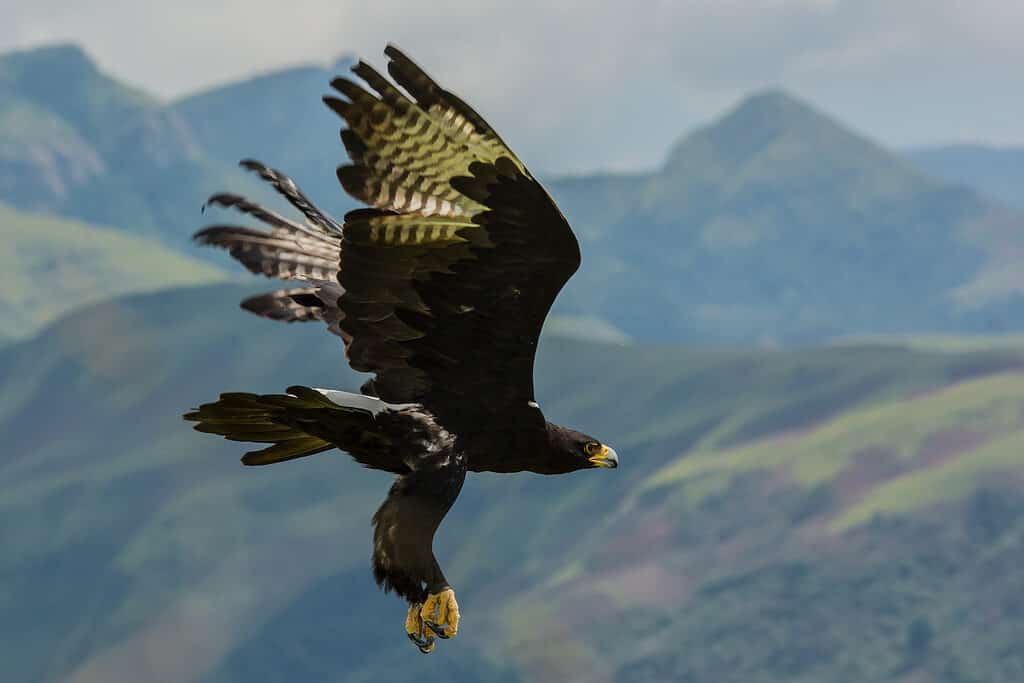
The black eagle is the bird of Austria, symbolizing strength and freedom.
©Eleanor Esterhuizen/Shutterstock.com
Austria does have official state and national animals. The black eagle is the national animal of Austria and has been since 1924 when it was adopted by the government. It symbolizes strength, courage, and freedom for Austrians.
The Styrian coarse-haired sheepdog (or “Stroßhund”) is also a popular animal in Austria due to its history as an ancient sheep guardian breed that originated in the country hundreds of years ago. This dog was officially made a state animal in 2000 because of its deep roots within Austrian culture.
Where to Find the Top Wild Animals in Austria
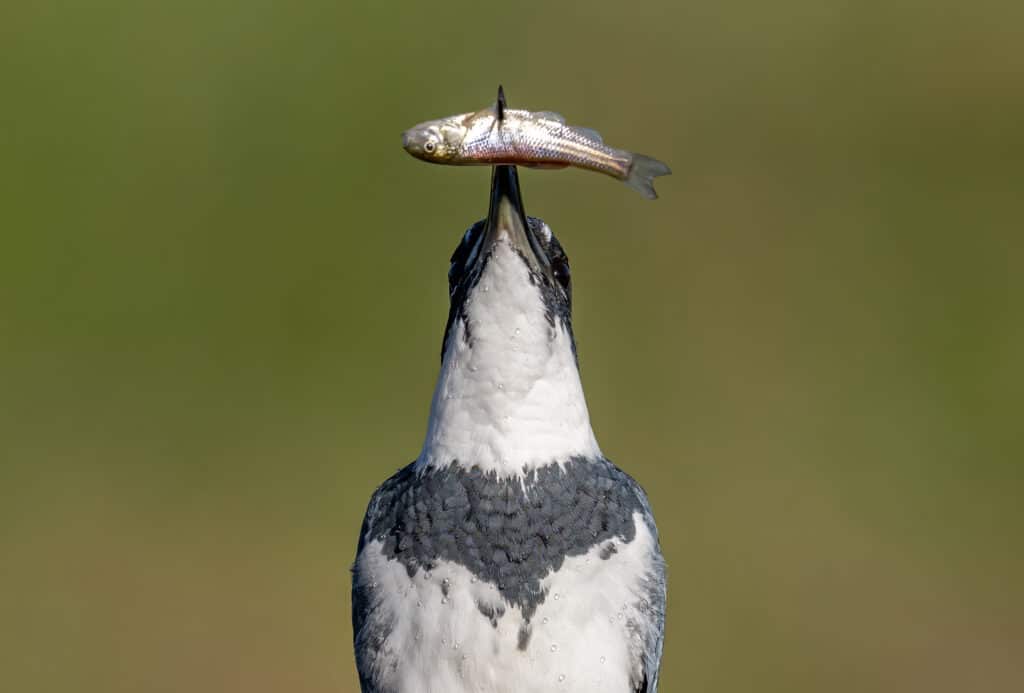
Kingfishers are fun to watch in Austria.
©Harry Collins Photography/Shutterstock.com
Austria is a beautiful country with an abundance of wildlife. There are many places in Austria where you can view wild animals and get up close to nature.
For bird watchers, the Danube region is a great spot for seeing different species of birds, such as herons, cormorants, kingfishers, and more. The Alpine regions also offer a wide range of bird species, including eagles, grouse, and buzzards.
If you’re looking to see larger mammals, the Hohe Tauern National Park provides excellent opportunities to witness chamois or marmots in their natural environment. You may even be lucky enough to spot one of Austria’s most beloved native animals – the alpine ibex! Other large mammals that inhabit this national park include red deer, roe deer, and lynx.
The rivers and lakes throughout Austria provide habitats for beavers which can often be seen swimming between ponds or along riverbanks during certain times of the day. In addition to these relatively common animal sightings, there are several rarer ones, such as brown bears or otters.
Austria has seven national parks and numerous wildlife reserves scattered across its diverse biomes. Here is where visitors can find some of the most unique wildlife in the country.
- The High Tauern National Park is located in the main chain of the Central Eastern Alps. Encompassing 700 square miles of mountains, valleys, forests, and glaciers, including the country’s highest peak, Grossglockner, this park is a rich source of red deer, chamois, Alpine ibex, griffon vultures, and golden eagles.
- The Neusiedler See-Seewinkel National Park is located in the easternmost state of Burgenland. Straddling diverse wetlands, meadows, and steppes, this park is an excellent source of migrating and nesting birds such as herons, great bustards, spoonbills, storks, geese, avocets, bee-eaters, and sea eagles. Horses and water buffalo also roam across the country.
- The Danube-Auen National Park, located near the capital of Vienna in the state of Lower Austria, is one of the largest remaining natural floodplains in Europe. Visitors can expect to find beavers, sea eagles, kingfishers, newts, and pond turtles here.
- The Kalkalpen National Park, located in the Northern Limestone Alps of Upper Austria, is one of the few places in the country where one can find the rare and elusive Eurasian lynx and the brown bears. It is also a rich source of bats, breeding birds, cave beetles, beavers, and butterflies.
- The Gesäuse National Park, located in the mountainous region of Upper Styria, contains chamois, golden eagles, red deer, otters, sandpipers, dippers, grey wagtails, beetles, spiders, and numerous species of butterflies.
Fish of Austria
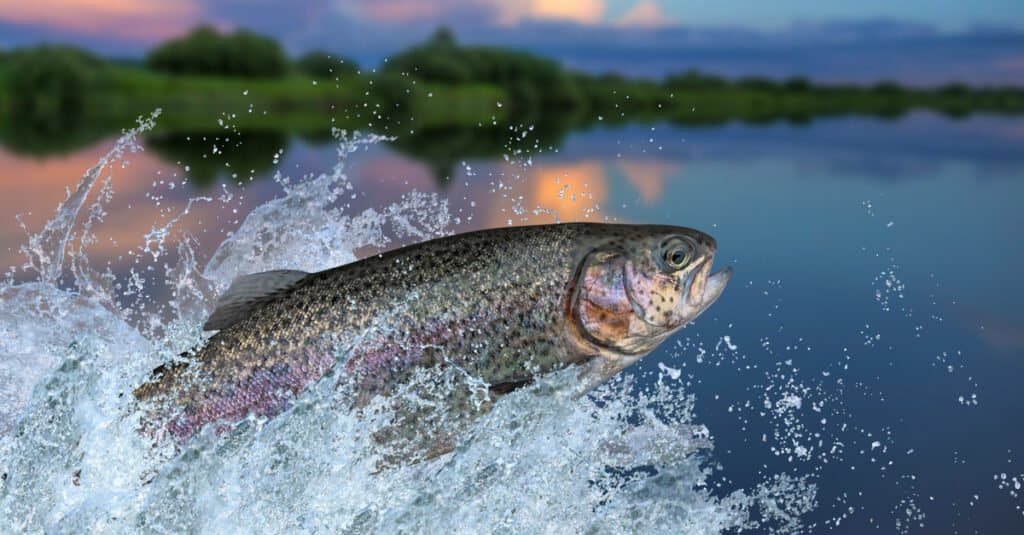
Rainbow trout are commonly found throughout Austria.
©FedBul/Shutterstock.com
The most common fish in Austria are trout, carp, and pike. These species can be found in both river and lake systems across the country. Austria is landlocked, so it does not have an ocean, but a large number of freshwater lakes, including Lake Neusiedl, Worthersee, and Traunsee, provide plenty of opportunities for fishing.
In addition to these three main species, numerous other varieties are native to Austrian waters, such as perch, zander (also known as walleye), tench, catfish, and eel. Many of these smaller species provide great opportunities for angling enthusiasts looking to catch something unique or unusual!
Birds of Austria
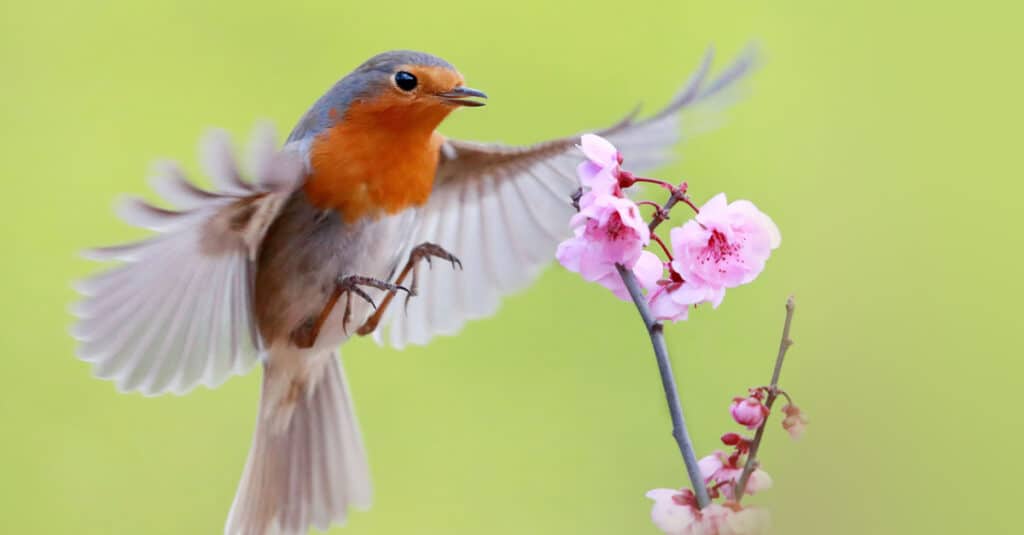
European robins are common birds to see throughout Austria.
©Wang LiQiang/Shutterstock.com
The most common birds to see in Austria are the European robin, Eurasian blackbird, common chaffinch, and Eurasian jay. Other species that can be seen in Austria include barn swallow, white stork, and wood pigeon.
Migratory birds that come to Austria during the summer months include many species of warblers, such as lesser whitethroat, garden warbler, and marsh warbler, as well as waders like ruff and spotted redshank. In addition to these seasonal migrants, there are a number of resident species which also travel between different parts of Europe throughout the year, such as golden orioles and hawfinches.
In wintertime, some of the migratory birds leave Austria for warmer climates, including swifts like the common swift, which migrate south across Africa or even further away towards India or Southeast Asia. Some others remain in their breeding grounds but move down into lower altitudes where food is more readily available such as the great grey shrike.
The Most Dangerous Animals in Austria Today
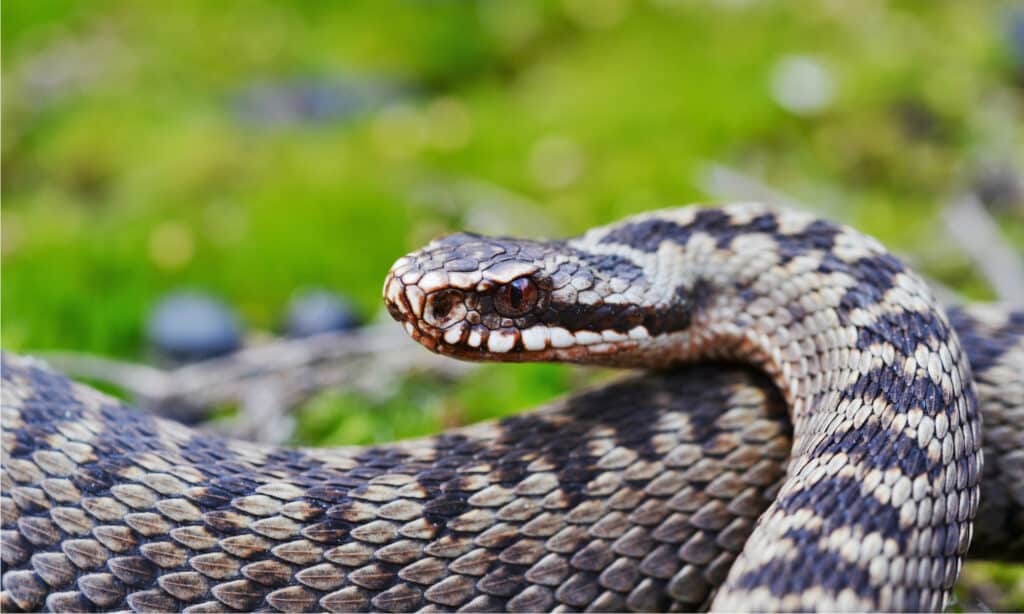
Common European Adder (Vipera berus) is one of the most dangerous animals in Austria.
©Holm94/Shutterstock.com
There are some potentially dangerous animals living in Austria. These include bears, wolves, and lynxes which can be found in the more remote mountainous regions of the country. Although attacks on humans are very rare, they can occur if these animals feel threatened or their cubs are at risk of harm.
If you plan to visit any forested areas in Austria, it is important to take precautions such as making noise so that the animals don’t surprise you and respect their habitats by not getting too close or disturbing them. Other dangerous wildlife species include wild boar and foxes which live throughout much of Austria and may attack if provoked or startled.
Overall, dangerous wildlife is relatively rare in Austria. People only need to look out for the few venomous snakes and dangerous predators in the remote countryside and mountains.
- Common European Adder– Easily identified by the dark brown colors and a zigzag pattern on the back, this large viper is widely distributed throughout much of Europe. As a result, it is responsible for more bites than almost any other snake on the continent. The most common symptoms of its toxin include pain, swelling, tingling, and blisters. Cardiovascular failure is extremely rare, even in untreated cases.
- Horned Viper – Native to southern Austria and the Balkans, this large viper is named after the big horn that emerges from its nose. The symptoms of its venom are pain, swelling, and discoloration.
- Eurasian Brown Bear – While brown bears could potentially kill a person, actual attacks occur in a very small number of on-foot encounters. Bears only tend to attack when they feel threatened or surprised, particularly when a mother bear is protecting her cubs.
3 Largest Animals in Austria
The three largest animals in Austria by feet and weight are the Eurasian Brown Bear, the European Bison, and the Red Deer. The average Eurasian Brown Bear is between 5 to 9 feet long and can weigh up to 550 pounds. This species of bear is native to most of Europe, including Austria, where they inhabit forests with plenty of cover, such as tall shrubs or trees. They mainly feed on fruits, nuts, honeycomb, roots, and tubers but will also scavenge for carrion if it is available. The Eurasian Brown Bear is the largest predator still living on the continent of Europe. ©Giedriius/Shutterstock.com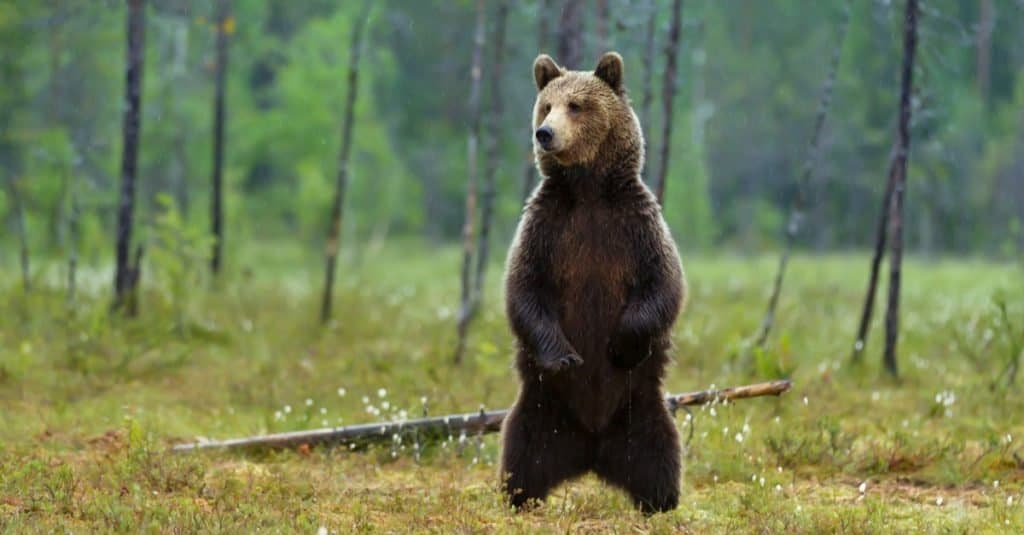
The European Bison stands at around 6-7 feet tall, with a shoulder height ranging from 4-6 feet. On average, this species weighs 900-2200 pounds depending on gender and age. These bovines prefer habitats that offer a variety of grasses for grazing along with some shelter from nearby trees or shrubs. However, they are able to adapt to different environments easily, so they can be found in many areas across central Europe, including parts of Austria. Their diet consists mainly of grasses, but during winter, when these become scarce, they may supplement their diets with bark stripped from young tree trunks or branches, as well as mushrooms and lichen, which grow on dead wood in their habitat. European Bison weigh 900 – 2200 pounds depending on gender and age. ©Theodor Negru/Shutterstock.com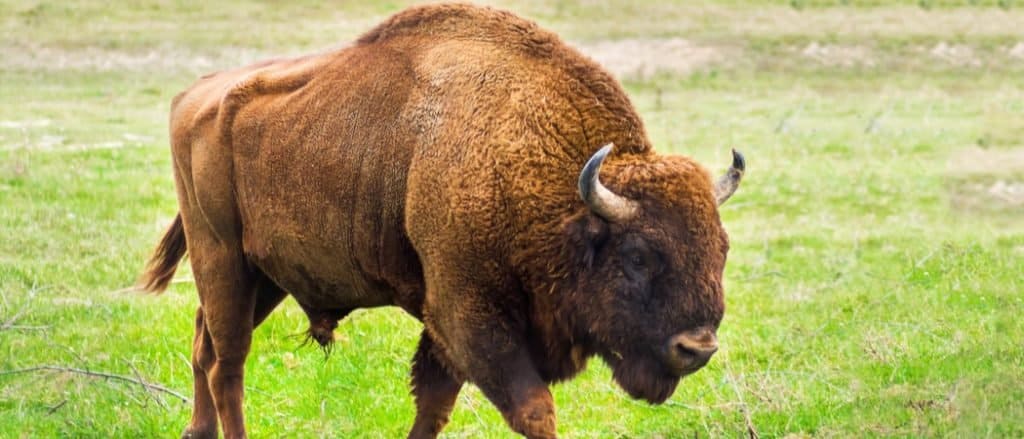
The Red Deer is another large animal species in Austria and can be found inhabiting open woodlands close to sources of food, like meadows full of vegetation. They usually measure between 5-8 feet long, including their tail, and weigh anywhere from 400-600 pounds depending on gender size. These animals are very social creatures. They live in large herds with a hierarchical structure that is led by an alpha male that helps protect the herd from predators. Red deer also have incredible senses! They possess excellent eyesight and hearing, allowing them to detect potential threats quickly. Their sense of smell allows them to locate food sources even when visibility is limited due to fog or other weather conditions.
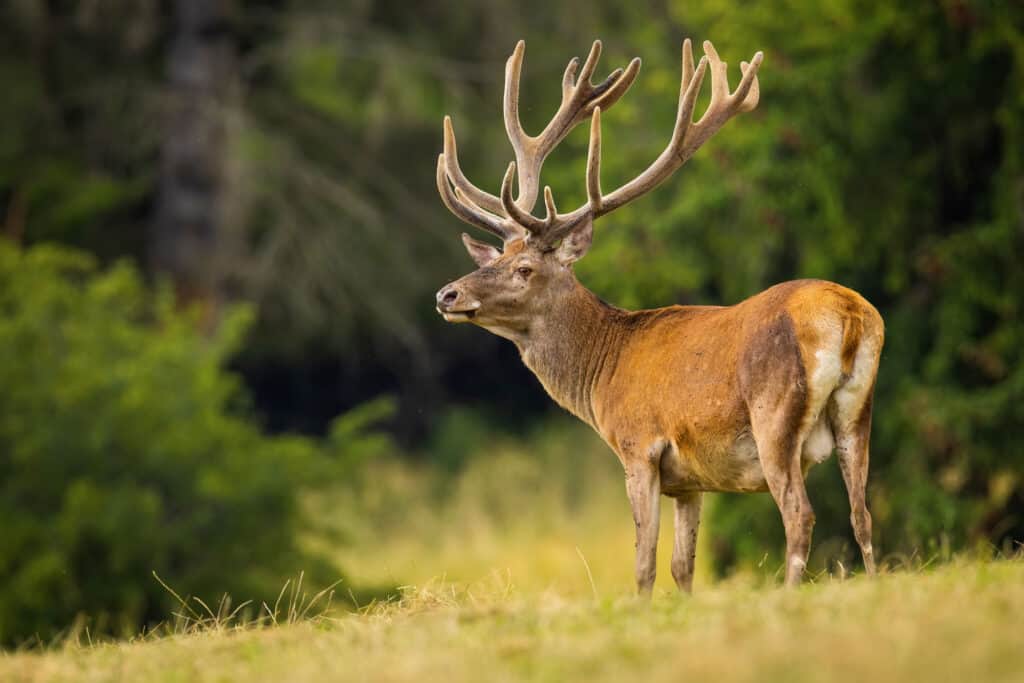
Red deer are some of the largest animals in Austria, reaching an average of 440 pounds.
©iStock.com/JMrocek
3 Rarest Animals in Austria
The three rarest animals to spot in Austria are the Alpine Ibex, the alpine marmot, and the Eurasian Lynx. These species are endangered due to a variety of factors, such as habitat destruction, climate change, and illegal poaching.
The Alpine Ibex is an alpine mountain goat found primarily in the high mountains of Austria’s Alps region. They usually live at altitudes between 5,000 to 10,000 feet above sea level and can be seen grazing on rocky cliffs or meadows during summer months. The main threats facing this species are human disturbance from tourism activities which can disrupt their migration routes, as well as excessive hunting for their horns and meat.
The alpine marmot (Marmota marmota) is a large ground squirrel native to Austria’s forests that lives in burrows beneath the soil surface. It feeds mainly on grasses and herbs but will also eat small insects when available. This species is threatened by deforestation caused by logging operations which can impact its natural habitats like coniferous forests where it nests year-round during hibernation periods. Other dangers include pollution from agricultural pesticides that contaminate its food sources.
Finally, the Eurasian Lynx is one of Europe’s largest wild cats, found mostly within densely forested areas throughout Austria’s mountainous regions, especially in northern parts of the country near Germany’s borderlands area. They hunt smaller animals, such as rodents or hares, while avoiding humans whenever possible. Seeing a Eurasian Lynx is rare in Austria. They are pretty sneaky cats. ©Milan Rybar/Shutterstock.com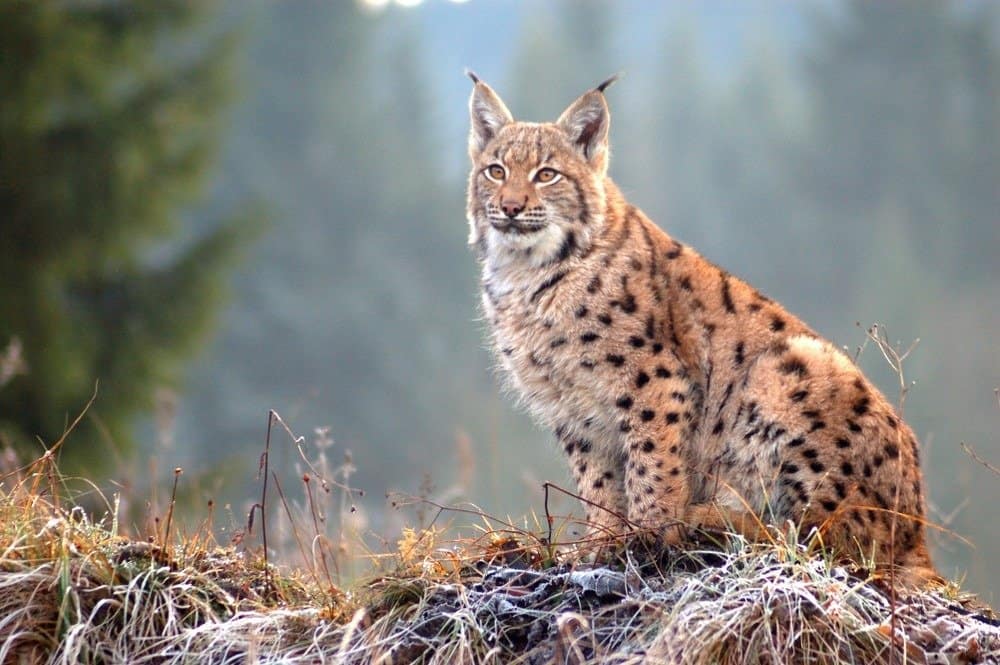
Endangered Animals in Austria

The European bison were hunted to extinction in Austria but are now being reintroduced to the area, thanks to conservation and breeding programs.
©Theodor Negru/Shutterstock.com
The European bison, also known as the wisent, has had a long and tumultuous history in Austria. It was once an important part of the country’s wildlife, but over time it became increasingly hunted and eventually went extinct due to human activity.
The cause of its extinction can be attributed to hunting for sport or food as well as habitat destruction caused by logging and farming practices. In recent years conservationists have been working hard to bring back the species with successful breeding efforts that are helping to increase their numbers.
However, there are still several other species that face the risk of becoming extinct due to continued threats such as climate change, pollution, poaching, and loss of habitat from industrial development. Conservationists continue their work in order to preserve Austria’s remaining biodiversity so future generations can enjoy it just as we do today.
- Eurasian Lynx – This big cat was nearly exterminated from Western and Central Europe in the 20th century (although it’s still thriving in northern Europe and Asia). In an effort to rehabilitate numbers, conservationists introduced the lynx to the mountains and forests of Austria in the 1980s and 1990s. There is currently a very small but self-sustaining population.
- Bavarian Pine Vole – This rare rodent was thought to be completely extinct in the wild until a new population was discovered in the state of Tyrol.
- European Hamster – This rodent’s natural territory once stretched across the entire European continent, but after years of popular decline, it’s currently considered to be an endangered species at risk of becoming extinct. Habitat loss and pollution appear to be the main reasons for their decline. Farmers also regard it as a pest.
- Freshwater Pearl Mussel – This endangered mollusk is endemic to freshwater temperate rivers around the world. But numbers appear to be in steep decline from water pollution and habitat degradation.
The Flag of Austria
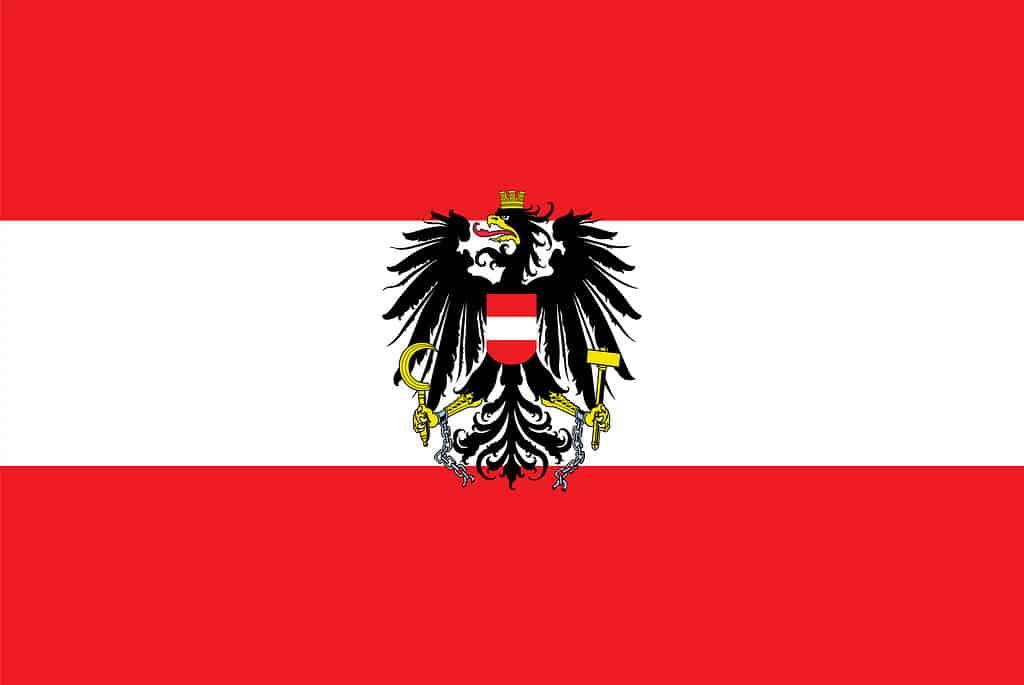
The flag of Austria is rich in symbolism.
©iStock.com/rep0rter
The Austrian flag is as symbolic as it is beautiful. The colors of the flag have deep meaning to Austrians, especially the red and white colors. Red on the Austrian flag represents love, generosity, bloodshed, and dominance, all qualities that Austria has historically held close to its heart.
It also stands for power and valor – two traits that many in Austria aspire to embody. White, on the other hand, emphasizes pureness and genuineness – values that are seen by many throughout Austria as central tenets of their culture. Altogether, these two colors create a powerful symbol of what it means to be an Austrian citizen – one that will remain strong for years to come!
Austrian Animals
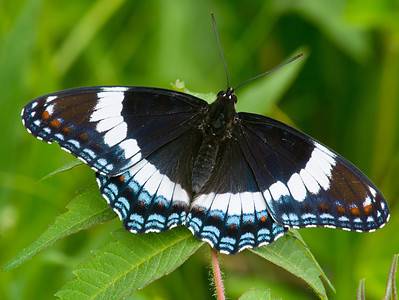
Admiral Butterfly
Stunningly beautiful wings
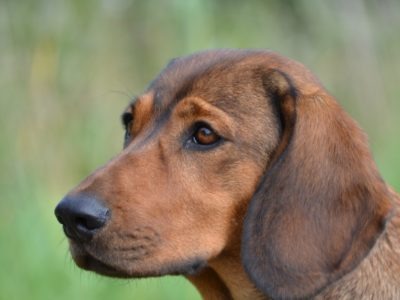
Alpine Dachsbracke
Good companion and hard-working breed!

Ant
First evolved 100 million years ago!

Armyworm
They are so named because they "march" in armies of worms from one crop to another in search of food
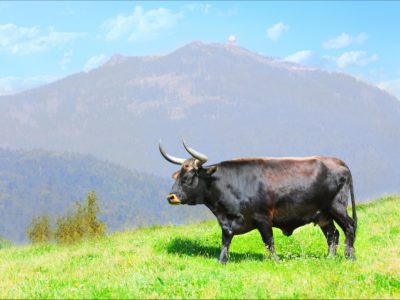
Aurochs
Extinct ancestor of all domesticated cattle!
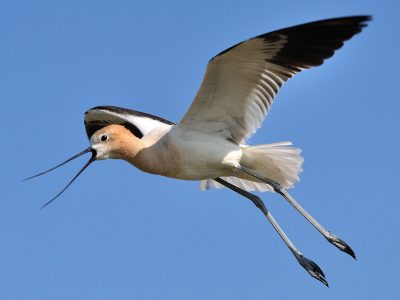
Avocet
Has a curved, upturned beak!
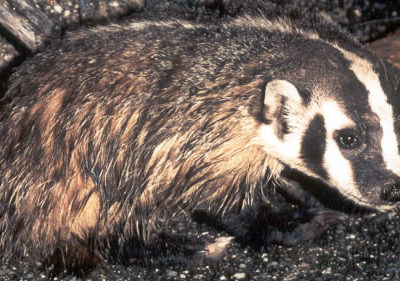
Badger
Can reach speeds of 30 km/h!

Barn Owl
Found everywhere around the world!

Barn Swallow
Older offspring help care for new hatchlings.

Bat
Detects prey using echolocation!
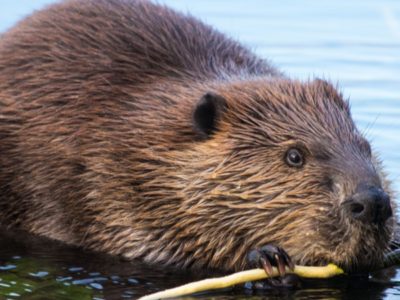
Beaver
Builds a dam from sticks and leaves!

Bed Bugs
Bed bugs feed for 4-12 minutes.

Bee
Rock paintings of bees date back 15,000 years

Beetle
There are more than 350,000 different species
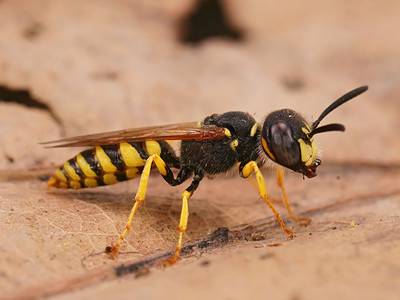
Beewolf wasp
They hunt bees

Bird
Not all birds are able to fly!

Biscuit Beetle
The biscuit beetle form a symbiotic relationship with yeast

Black Widow Spider
They typically prey on insects!
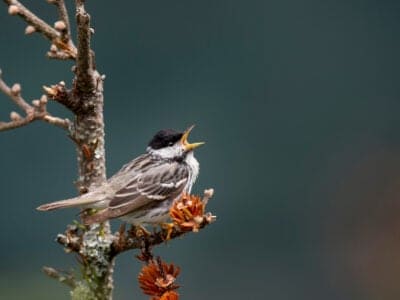
Blackpoll Warbler
They migrate for the longest distance of any warbler.
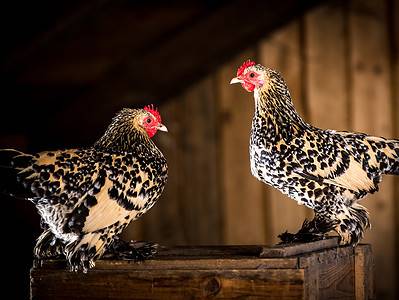
Booted Bantam
The feathers on the feet of tiny Booted Bantam chickens can reach up to six inches in length!
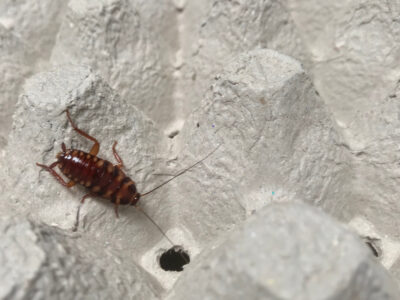
Brown-banded Cockroach
Females glue egg cases to furniture
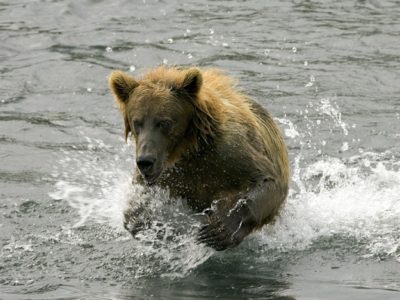
Brown Bear
A dominant predator in it's environment!

Brown Dog Tick
Can live its entire life indoors
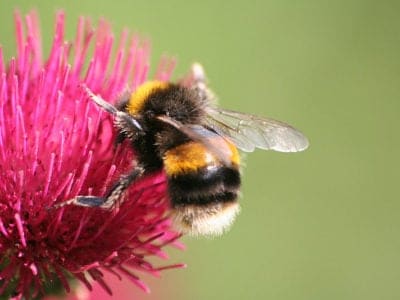
Bumblebee
The most common species of bee!

Butterfly
There are thought to be up 17,500 species!

Camel Cricket
The camel crickets that are found in the USA are light brown in color. They also have dark streaks all over their body.

Carpenter Ant
Carpenter ants can lift up to seven times their own weight with their teeth!

Cat
May have been domesticated up to 10,000 years ago.

Caterpillar
The larvae of a moth or butterfly!

Catfish
There are nearly 3,000 different species!

Centipede
There are about 3,000 documented species!
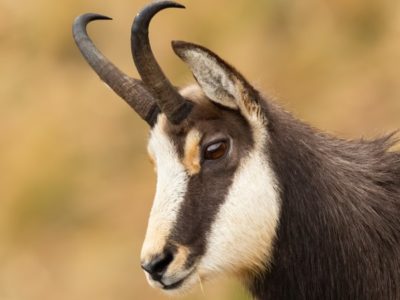
Chamois
Natively found in the European mountains!

Chicken
First domesticated more than 10,000 years ago!
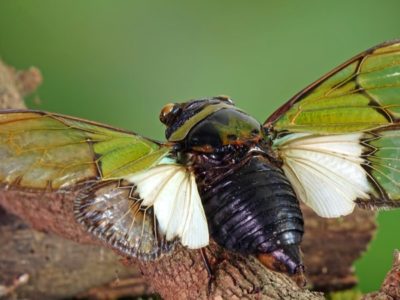
Cicada
Cicadas have one of the longest insect lifespans

Cockroach
Dated to be around 300 million years old!

Codling Moth
Pupae are able to undergo diapause to survive poor fruit yield years and winter.
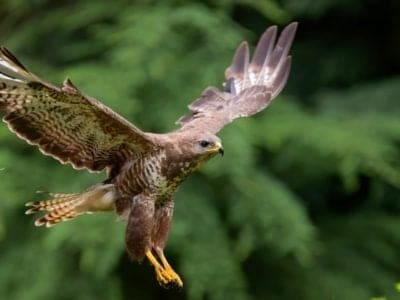
Common Buzzard
The most common raptor in the UK!
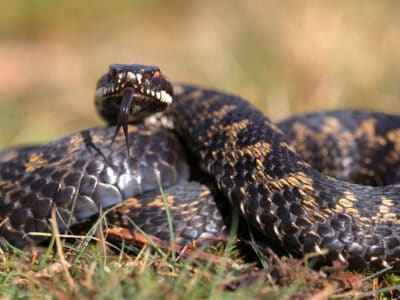
Common European Adder
European adders are the only snake that lives above the Arctic Circle.
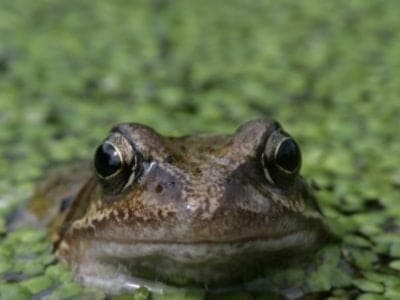
Common Frog
Found throughout the European continent!

Common Furniture Beetle
The common furniture beetle feeds exclusively on wood

Common House Spider
House spiders have the ability to eat most insects in a home.
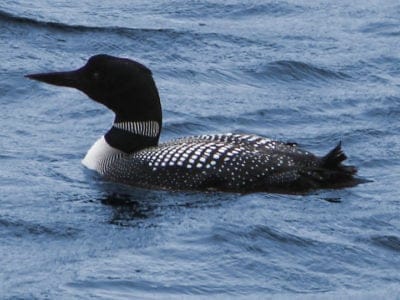
Common Loon
Also known as the Great Northern Diver

Common Raven
A group of ravens is called an unkindness or a conspiracy.
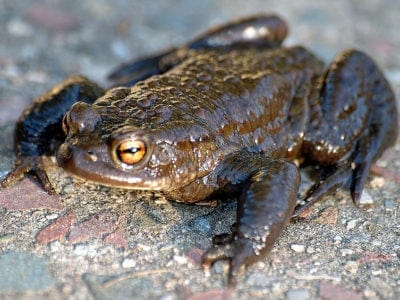
Common Toad
Most active in wet weather!

Cormorant
They can fly 35 mph and dive 150 feet below water.

Cow
There are nearly 1.5 billion worldwide!

Crab
There are 93 different crab groups

Crab Spider
Crab Spiders can mimic ants or bird droppings
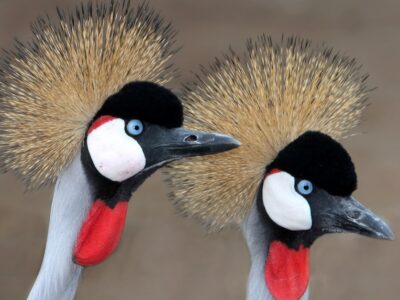
Crane
Many are critically endangered species!

Cricket
Male crickets can produce sounds by rubbing their wings together

Crow
A group of these birds is called a Murder.
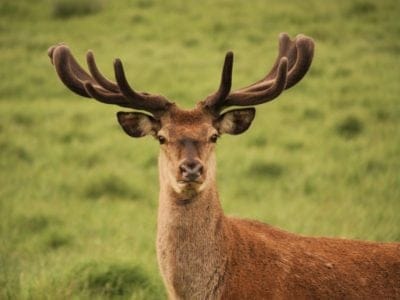
Deer
There are around 40 different species!
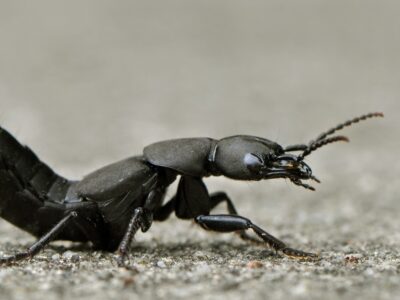
Devil’s Coach Horse Beetle
The Devil’s coach horse beetle can emit a noxious substance to deter predators

Dog
First domesticated in South-East Asia!

Dog Tick
Dog ticks feed on dogs and other mammals

Donkey
First domesticated 5,000 years ago!

Dragonfly
It's larvae are carnivorous!

Duck
Rows of tiny plates line their teeth!

Dung Beetle
The dung beetle can push objects many times its own weight
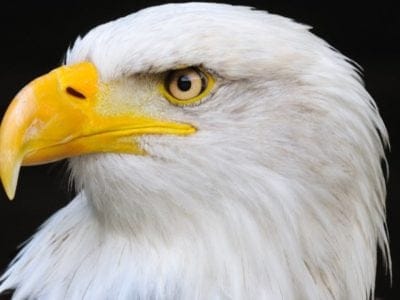
Eagle
Has exceptional eyesight!

Earthworm
They are hermaphrodites, which means they have male and female organs

Earwig
There are nearly 2,000 different species!
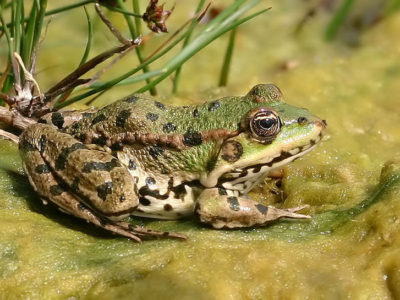
Edible Frog
Are known to guard the muddy banks!

Eel
Eels can be a mere few inches long to 13 feet!
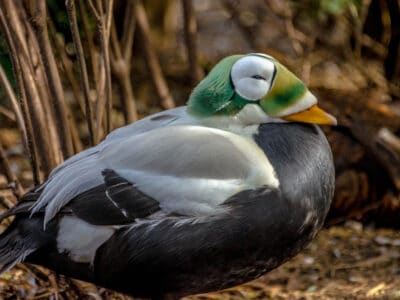
Eider
Eiders are sexually dimorphic, with males being larger and more colorful.
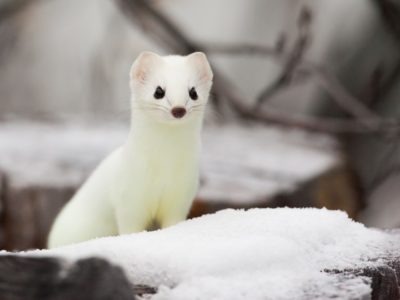
Ermine
A very bold and ferocious predator!
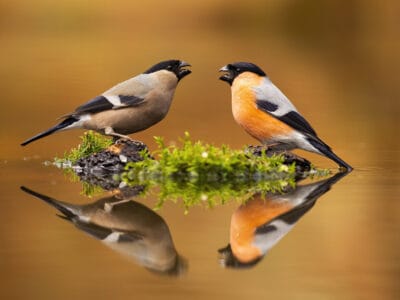
Eurasian Bullfinch
The shy eurasian bullfinch prefers to forage very close to cover.
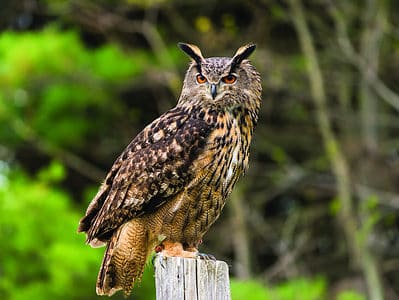
Eurasian Eagle-owl
The Eurasian Eagle-owl is the second largest owl in the world with a wingspan up to six feet!
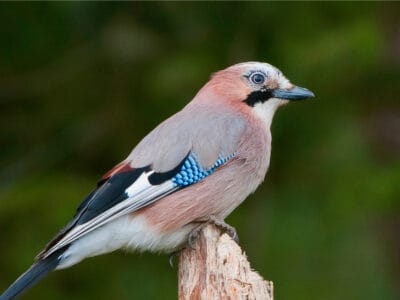
Eurasian Jay
The Eurasian jay has the ability to mimic other sounds
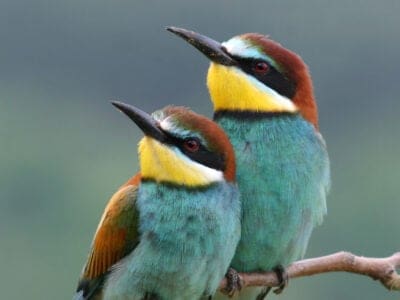
European Bee-Eater
They can eat up to 250 bees per day!
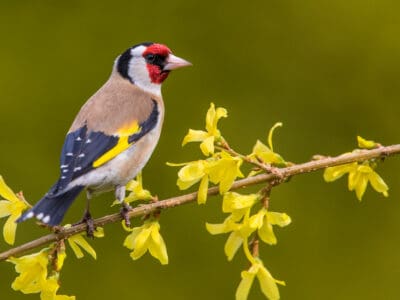
European Goldfinch
They are frequent visitors to backyard feeders, especially those containing niger seeds.
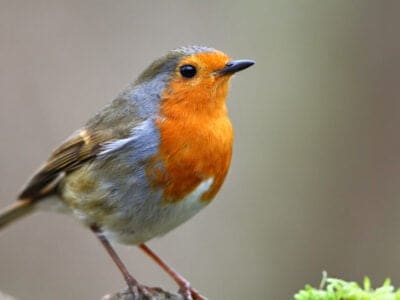
European Robin
Male robins are so aggressive and territorial that they will attack their own reflections.

Falcon
The fastest creatures on the planet!
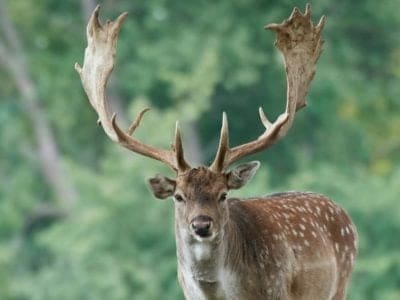
Fallow deer
The fallow deer has more variation in its coat colors than most other deer.

False Widow Spider
False spiders actually prey on black widow spiders and other hazardous spiders
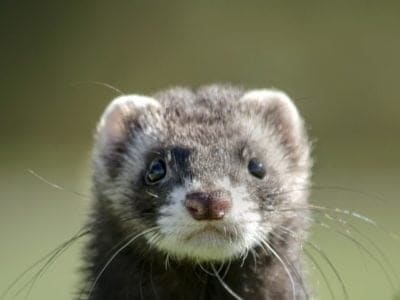
Ferret
Ferrets can be trained to do tricks like dogs!
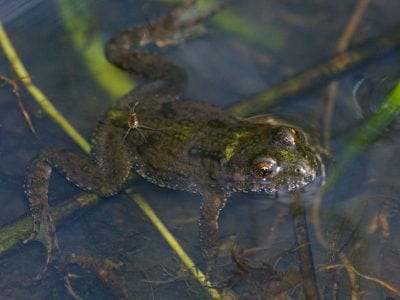
Fire-Bellied Toad
Found across mainland Europe and Asia!
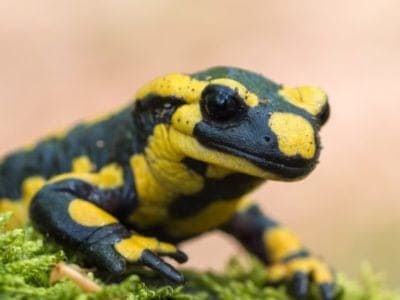
Fire Salamander
Its name comes from the fact that people once believed it was born in fire

Firefly
The firefly produces some of the most efficient light in the world

Flea
Adult fleas can jump up to 7 inches in the air
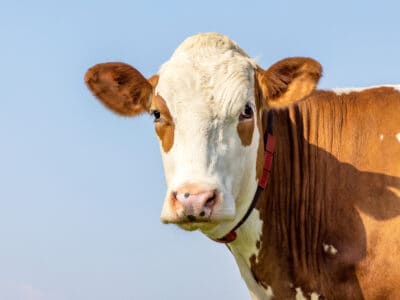
Fleckvieh Cattle
Besides being bred for milk and meat, these cattle were also used as draft oxen.

Fly
There are more than 240,000 different species!
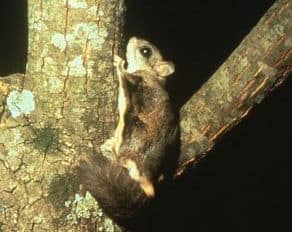
Flying Squirrel
Can glide up to 90 meters!
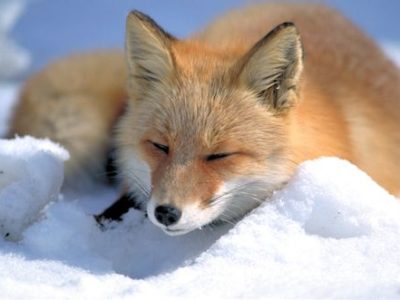
Fox
Only 12 species are considered "true foxes"

Frog
There are around 7,000 different species!

Fruit Fly
Fruit flies are among the most common research animals in the world
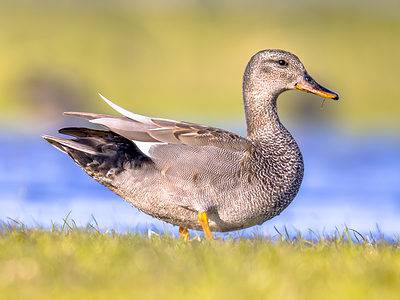
Gadwall
They make many sounds when trying to attract a mate.

German Cockroach
The most common type of urban roach
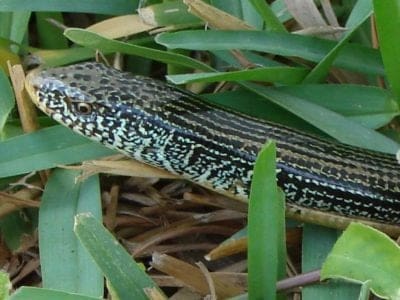
Glass Lizard
Can grow up to 4ft long!

Glowworm
Found inhabiting dense woodland and caves!

Gnat
Males form large mating swarms at dusk
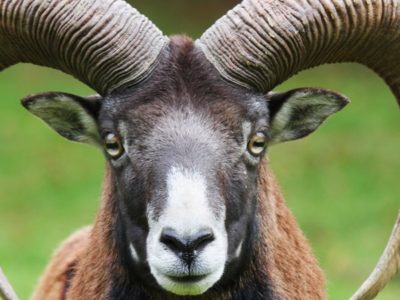
Goat
Most closely related to the Sheep!
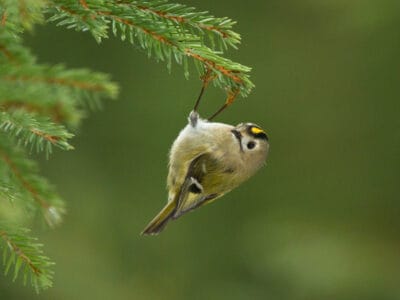
Goldcrest
The goldcrest never starts moving and needs to consume for most of the day to survive. Therefore, in the colder months, it's best that eat 90% a day.
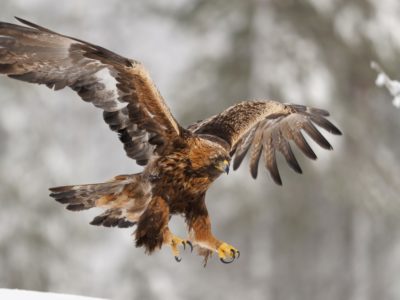
Golden Eagle
Their calls sound like high-pitched screams, but they are quiet most of the time.
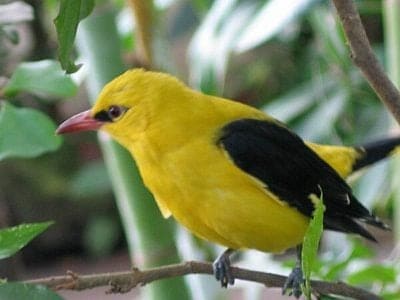
Golden Oriole
Migrates between Europe and Asia!
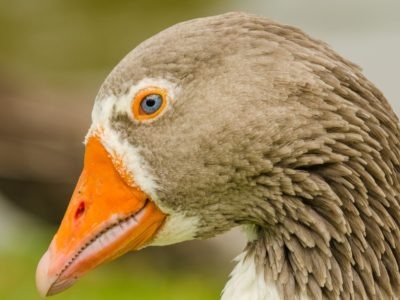
Goose
There are 29 different species!

Grasshopper
There are 11,000 known species!

Gypsy Moth
One of the most invasive species in the world

Hamster
Able to run as quickly backwards as forwards!

Hare
Can reach speeds of over 50 mph!

Hawk Moth Caterpillar
Many hawk moth caterpillars eat toxins from plants, but don’t sequester them the way milkweed butterflies do. Most toxins are excreted.
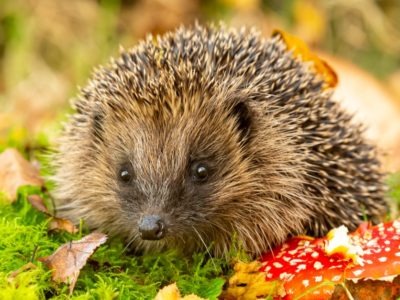
Hedgehog
Thought to be one of the oldest mammals on Earth!

Heron
Inhabits wetlands around the world!
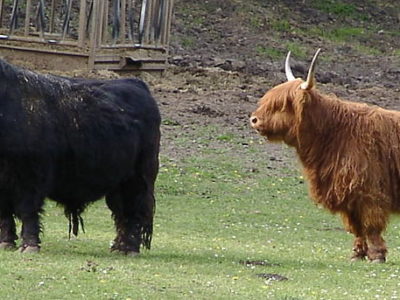
Highland Cattle
Natively found in the Scottish Highlands!

Honey Bee
There are only 8 recognized species!
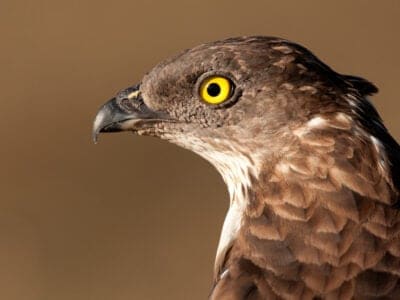
Honey Buzzard
Honey buzzards are medium-sized raptors that earned their names by raiding the nests of bees and wasps.
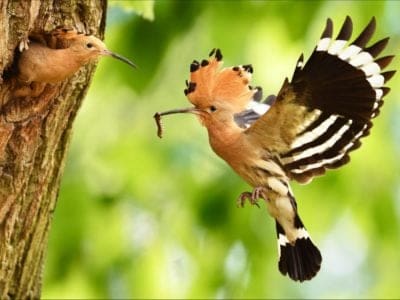
Hoopoe
Stunning bird with a stinky way to deter predators!

Horse
Has evolved over 50 million years!

Horsefly
Horseflies have been seen performing Immelmann turns, much like fighter jets.

Housefly
The fly has no teeth

Human
Thought to have orignated 200,000 years ago!

Huntsman Spider
Some huntsman spiders have an interesting way of moving around. Some cartwheel while others do handsprings or backflips.
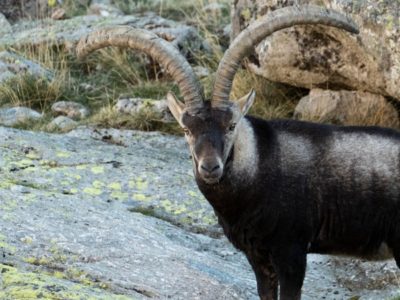
Ibex
Can jump over 6 feet straight up from a standstill

Insects
There are an estimated 30 million species!
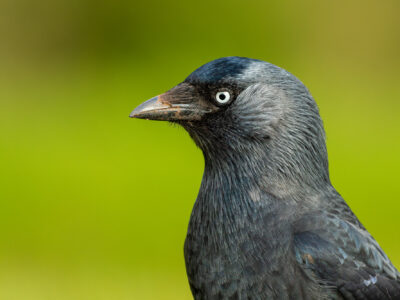
Jackdaw
The jackdaw tends to mate for life with a single partner

Jumping Spider
Some can jump 50 times the length of their bodies

Kingfisher
Inhabits wetlands and woodlands worldwide!

Ladybug
There are more than 5,000 species worldwide!
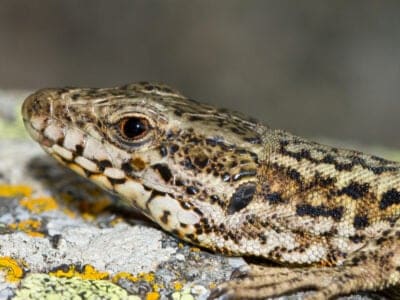
Lazarus Lizard
Lazarus Lizards can communicate through chemical and visual signals.

Leech
Has 10 pairs of eyes!
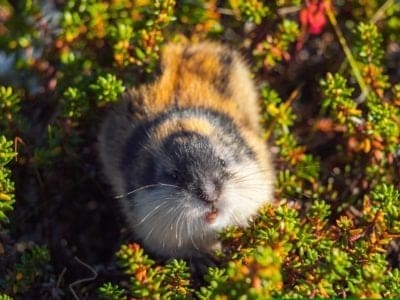
Lemming
Does not hibernate during the bitter Arctic winter!
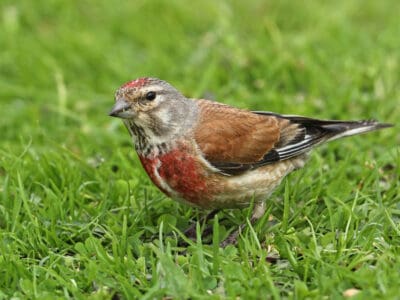
Linnet
While linnets are monogamous during mating season, they do not mate for life. While breeding pairs are together, the males are highly territorial and will defend the nesting site and the surrounding area.

Lizard
There are around 5,000 different species!
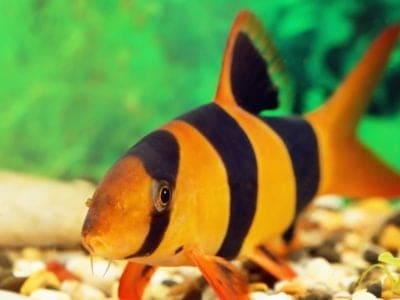
Loach
Have sharp spines below their eyes

Locust
Each locust can eat its weight in plants each day.
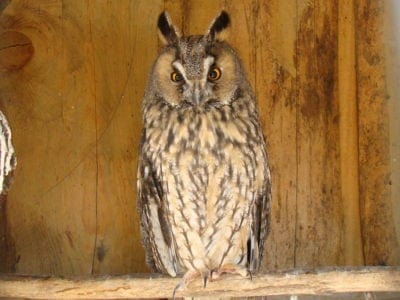
Long-Eared Owl
Ear tufts make it look bigger!
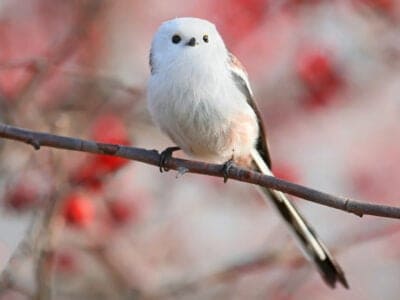
Long-Tailed Tit
Often hangs upside down while feeding!
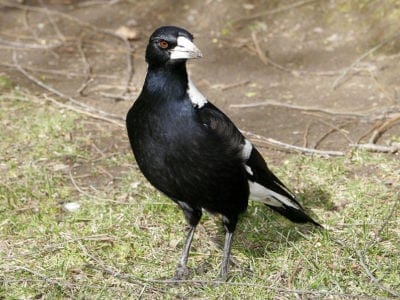
Magpie
They are found across Europe, Asia and Africa!
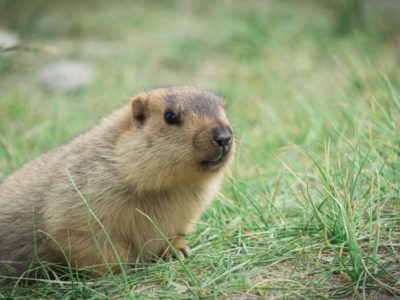
Marmot
A marmot spends 80% of its life below ground
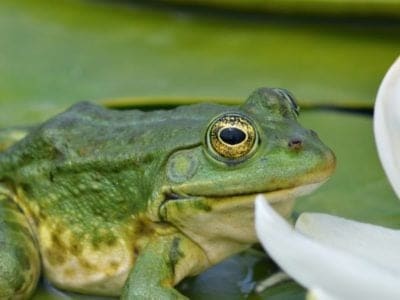
Marsh Frog
Has bright green skin!

Mayfly
There are 2,500 known species worldwide!

Mealybug
They have a symbiotic relationship with ants.
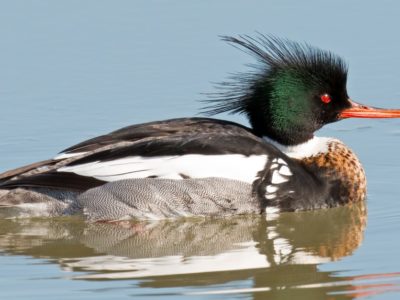
Merganser
They line their nests with their feathers

Millipede
Some species have a poisonous bite!
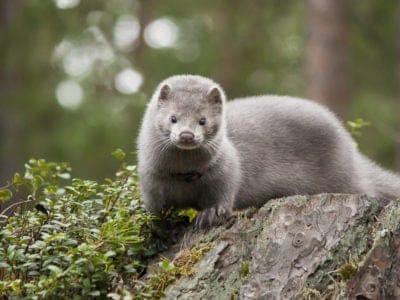
Mink
The mink can swim up to 100 feet underwater.

Mole
Primarily hunts and feeds on Earthworms!
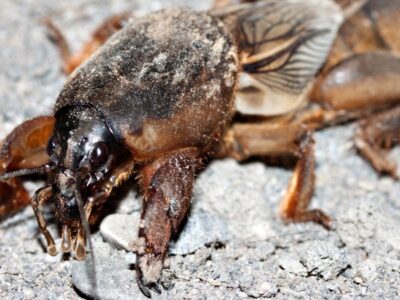
Mole Cricket
Adult Mole crickets may fly as far as 5 miles during mating season and are active most of the year.

Mongrel
Has characteristics of two or more breeds!

Moorhen
Feeds on aquatic insects and water-spiders!

Mosquito
Only the female mosquito actually sucks blood

Moth
There are 250,000 different species!

Mouse
Found on every continent on Earth!

Mule
The offspring of a horse and donkey parents!
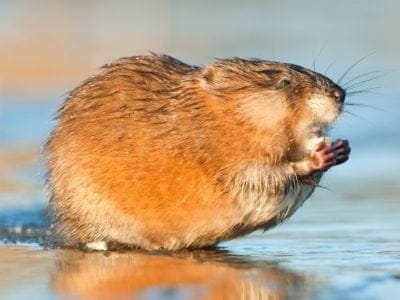
Muskrat
The muskrat can stay underwater up to 17 minutes at a time
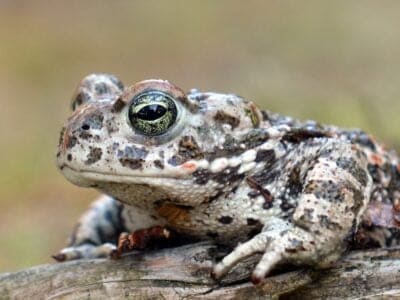
Natterjack
Can lay up to 7500 eggs
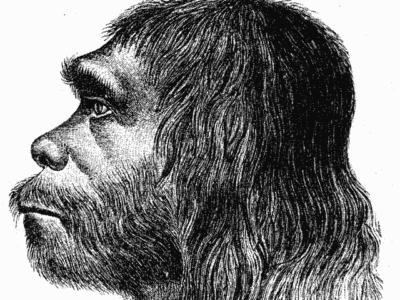
Neanderthal
Roamed Asia and Europe for around 100,000 years!

Nematode
Nematodes range in size from 1/10 of an inch to 28 feet long
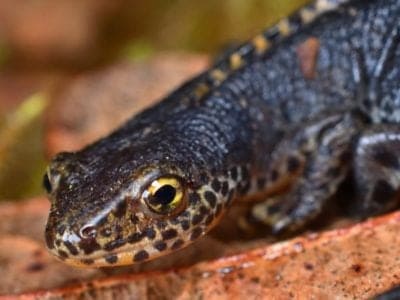
Newt
Able to regrow lost or damaged limbs!
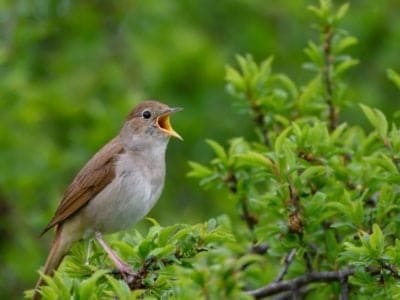
Nightingale
Named more than 1,000 years ago!

No See Ums
There are more than 5,000 species.
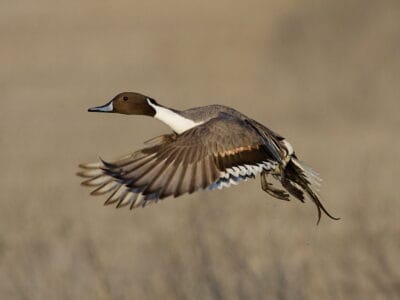
Northern Pintail
Northern pintails migrate at night with speeds reaching 48 miles per hour!
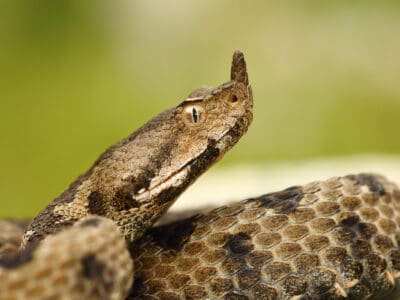
Nose-Horned Viper
The fangs of a nose-horned viper can be as long as half an inch!
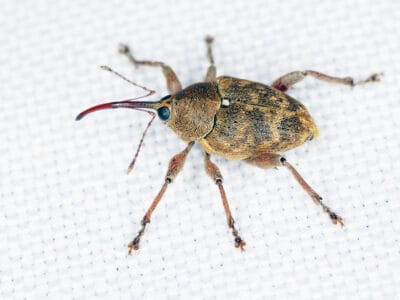
Nut Weevil
Bore holes in tree nuts and lay their eggs inside
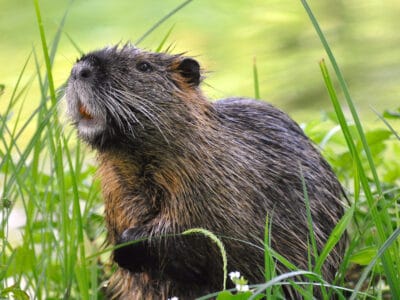
Nutria
An invasive species, one female nutria can birth up to 200 babies in just a few years of living!
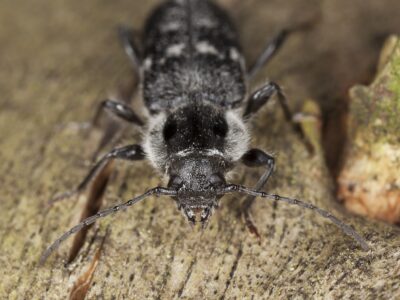
Old House Borer
Depending on the habitat and climate, these beetles can live between 2 to 10 years, often staying in their larval stage for several years, making them extremely dangerous to wooden structures.

Orb Weaver
Females are about four times the size of males
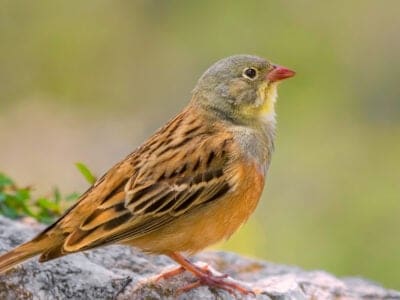
Ortolan Bunting
The tradition of hiding your face with a napkin or towel while eating this bird was begun by a priest who was a friend of the great French gastronome Jean Anthelme Brillat-Savarin.

Osprey
They reuse nesting sites for 70 years!

Otter
There are 13 different species worldwide

Owl
The owl can rotate its head some 270 degrees
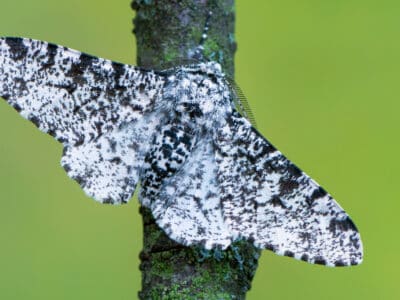
Peppered Moth
Teachers in schools often use the evolution of the peppered moth as a good example of Darwin’s theory of natural selection.

Peregrine Falcon
Fastest animal on Earth

Pheasant
Females lay between 8 and 12 eggs per clutch!
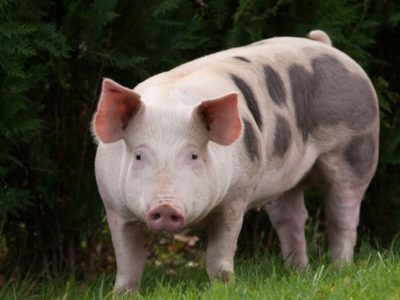
Pig
Thought to have been domesticated in 9,000 BC!

Pigeon
They can find their way back to their nests from up to 1300 miles away.
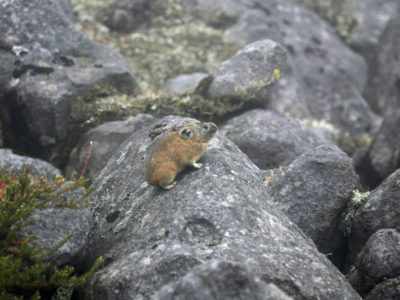
Pika
Found in mountainous regions and rocky areas
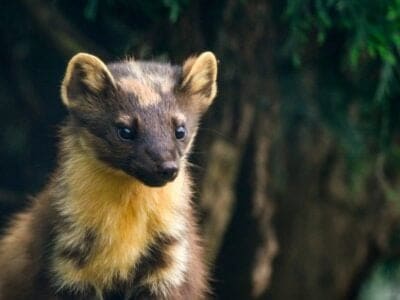
Pine Marten
A pine marten can jump from tree to tree similar to a squirrel.
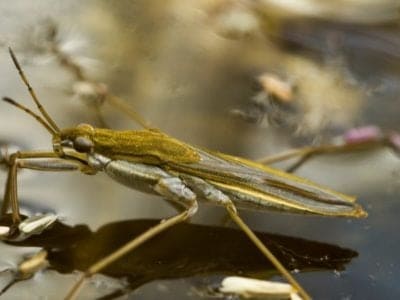
Pond Skater
There are 500 different species!
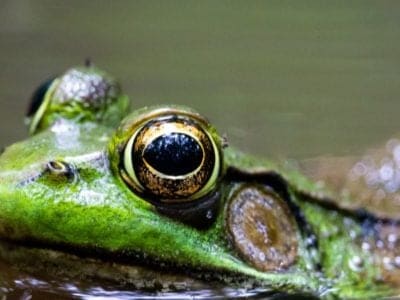
Pool Frog
The rarest amphibian in the UK!
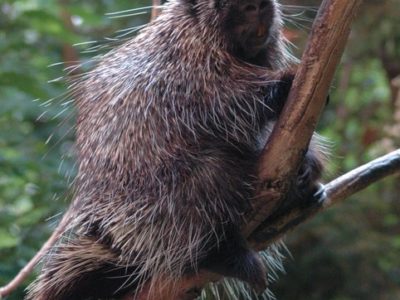
Porcupine
There are 30 different species worldwide!
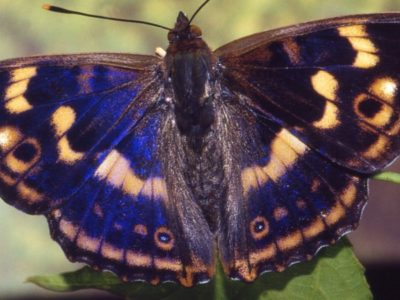
Purple Emperor Butterfly
Inhabits deciduous forests!
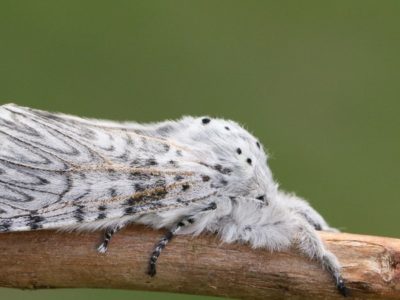
Puss Moth
Caterpillars squirt formic acid!

Quail
Inhabits woodland and forest areas worldwide!
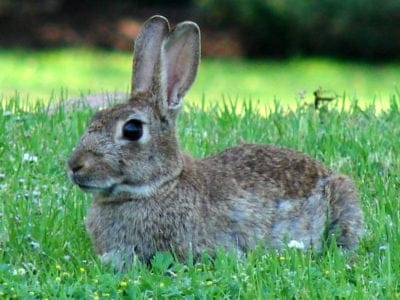
Rabbit
There are more than 300 different species!
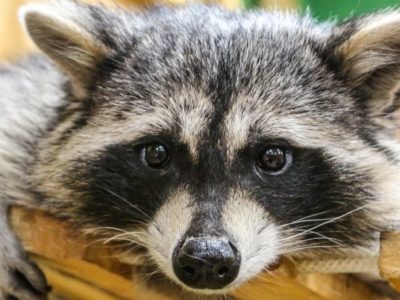
Raccoon
Known to wash their food before eating it!
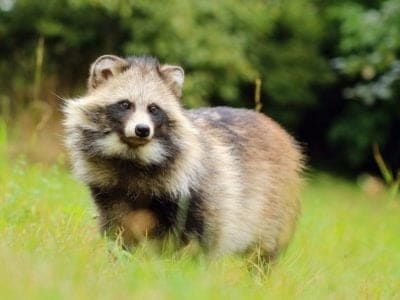
Raccoon Dog
The only hibernating canine!

Rat
Omnivores that eat anything!
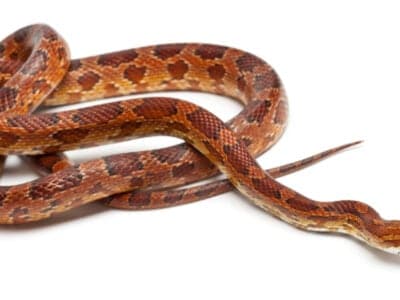
Rat Snakes
Rat snakes are constrictors from the Colubridae family of snakes.

Red Deer
A male red deer shows his age in his antlers, which become longer and more branched every year.
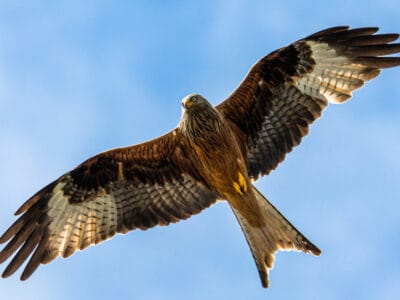
Red Kite
This bird moves its tail to steer its body like a rudder on a boat.
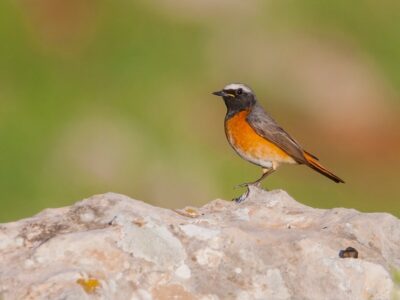
Redstart
They build their nests off the ground in tree holes, cavities, stone walls, and roofs

River Turtle
Inhabits freshwater habitats around the world!

Robin
There are more than 45 species in Australia alone!

Rodents
The capybara, the world’s largest rodent, likes to be in and around bodies of water. Because of this, the Catholic Church in South America decided that it was a fish, and people were allowed to eat it during Lent and First Fridays.
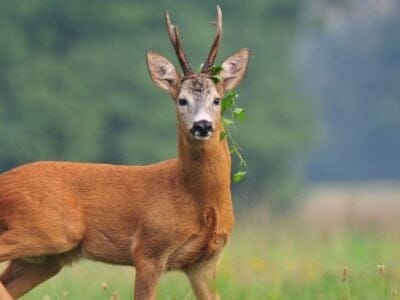
Roe Deer
The roe is one of the most popular game animals in Europe

Rooster
Will mate with the entire flock!
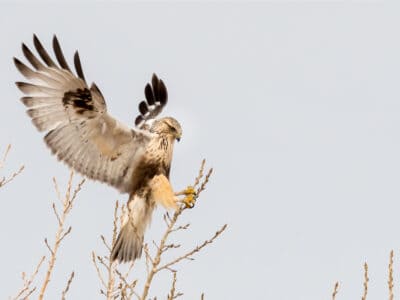
Rough-Legged Hawk (Rough-Legged Buzzard)
Its scientific name, lagopus, is Ancient Greek for “hare” and “foot,” referring to its feathered feet and toes.

Sable Ferret
Ferrets were used during the Revolutionary War to keep down the rat population.
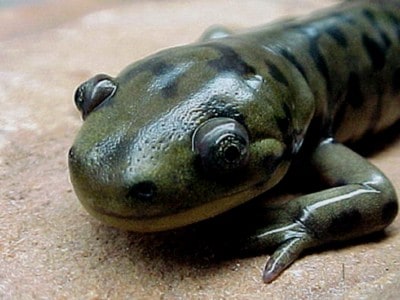
Salamander
There are more than 700 different species!
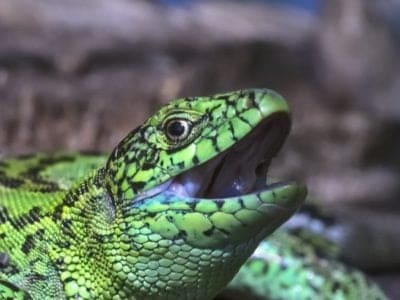
Sand Lizard
Males turn green in spring!

Scorpion
There are around 2,000 known species!

Sea Eagle
The sea eagle tends to mate for life with a single partner

Seahorse
Males give birth to up to 1,000 offspring!

Sheep
Around 35 million in the English countryside!
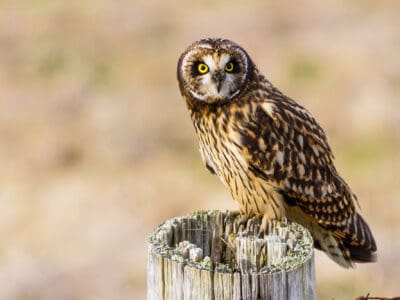
Short-Eared Owl
The short-eared owl is one of the most widespread owl species in the world, covering five continents.

Shrew
The spinal column of the shrew Scutisorex somereni is so strong and reinforced that it can support the weight of an adult human.

Shrimp
There are 2,000 different species worldwide!

Skink Lizard
Some skinks lay eggs in some habitats while giving birth to skinklets in other habitats.
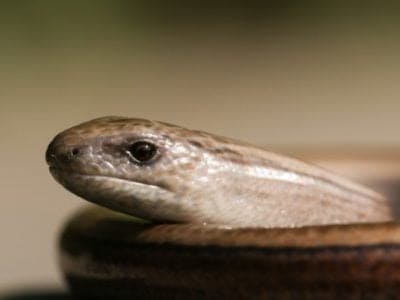
Slow Worm
Found widely throughout British gardens!

Slug
They glide around on one foot, which is aided by the slime they produce
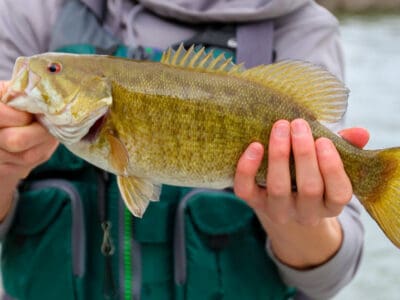
Smallmouth Bass
A fierce fighter!

Smokybrown Cockroach
Has up to 45 eggs per egg case

Snail
There are nearly 1,000 different species!

Snake
There are around 4,000 known species worldwide
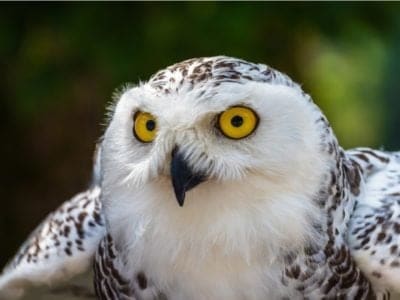
Snowy Owl
One of the largest owl species in the world!
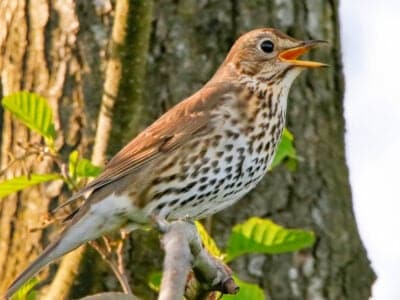
Song Thrush
A male song thrush can have over 100 phrases in his repertoire of songs and can imitate pet birds, telephones and other man-made objects.
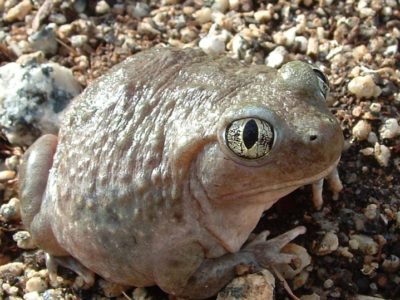
Spadefoot Toad
They spend most of their time underground!

Sparrow
There are 140 different species!

Spider Wasp
They prey on spiders to feed their larvae or they parasitize other spider wasps.

Squirrel
Small rodents found in woodlands worldwide!

Stick Insect
There are more than 3,000 different species!
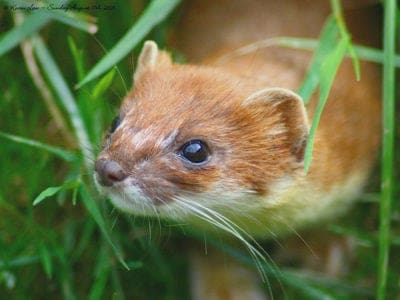
Stoat
Average adults weigh about 200 grams!
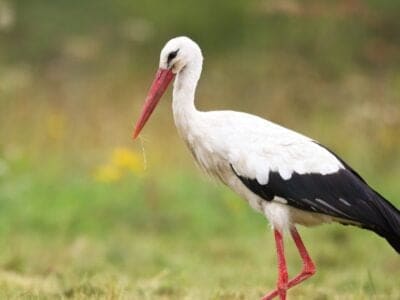
Stork
They can’t sing like other birds.

Swan
Populations have been affected by pollution!
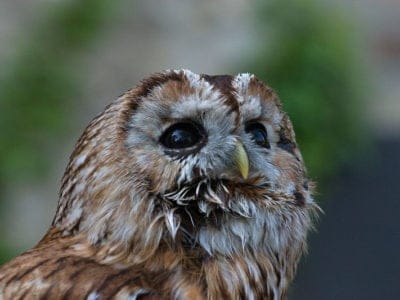
Tawny Owl
The most widespread owl in Europe!

Termite
Their mounds can be up to 9 meters tall!

Thrush
The American robin is called the robin because its red breast reminded European settlers of the robin back in the old country.

Tick
They inject hosts with a chemical that stops them from feeling the pain of the bite

Tiger Beetle
The adult tiger beetle is one of the fastest land insects in the world
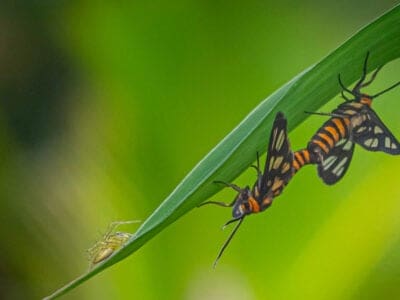
Tiger Moth
The bright colors of this moth are a signal to predators that it has a terrible taste.

Tortoise
Can live until they are more than 150 years old!

Tree Frog
Found in warmer jungles and forests!

Turtles
Some species of aquatic turtles can get up to 70 percent of their oxygen through their butt.
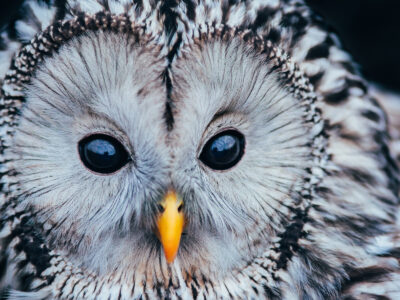
Ural owl
The Ural owl can rotate its head up to 270 degrees
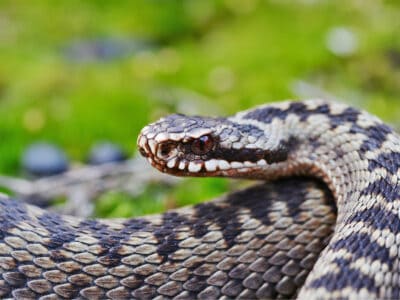
Viper
Vipers are one of the most widespread groups of snakes and inhabit most

Vulture
There are 30 different species worldwide!

Wasp
There are around 75,000 recognised species!
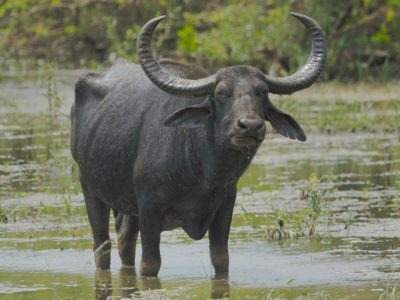
Water Buffalo
Has been domesticated for thousands of years!
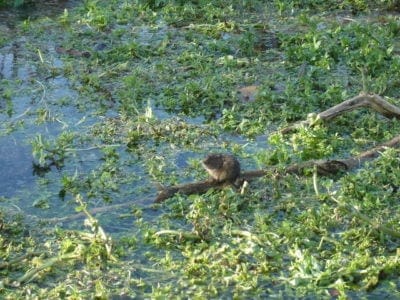
Water Vole
The largest Vole species in the UK!
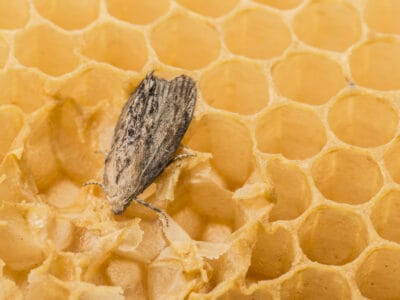
Wax Moth
The Wax Moth larvae are more dangerous than the adult.
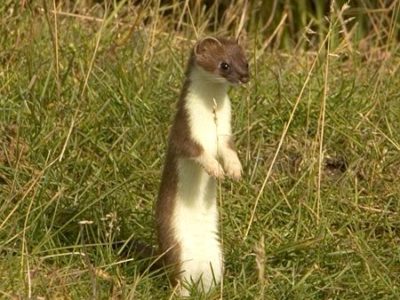
Weasel
The smallest carnivorous mammal in the world!

White Ferret / Albino Ferrets
There are two different types of white ferrets!
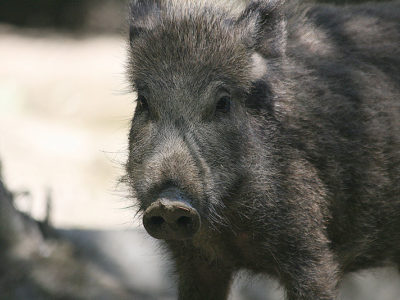
Wild Boar
Males have a top tusk to sharpen the bottom one!
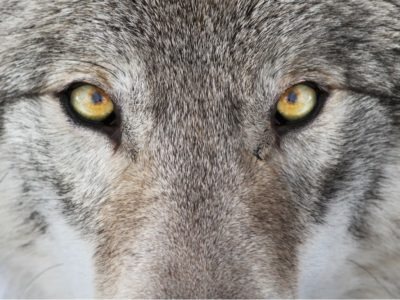
Wolf
Thought to date back more than 300,000 years!

Wolf Spider
Carnivorous arachnid that hunts its prey.

Woodlouse
This animal can roll up into a ball
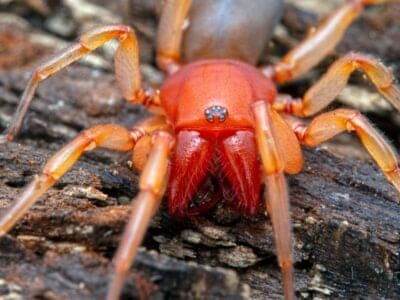
Woodlouse Spider
Unlike most spiders, woodlouse spiders don’t build a web.

Woodpecker
There are 200 different species!
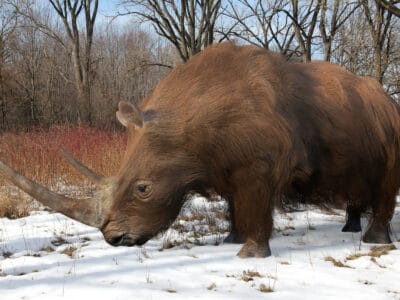
Woolly Rhinoceros
The woolly rhinoceros roamed the earth between three and a half million and 14,000 years ago.

Worm
Doesn’t have eyes.
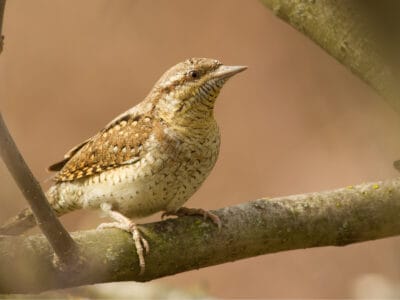
Wryneck
They feign death by making their bodies limp and closing their eyes.
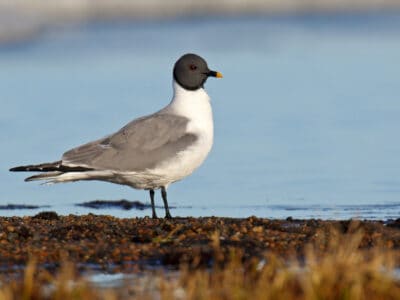
Xeme (Sabine’s Gull)
They follow after seals and whales to eat their scraps.
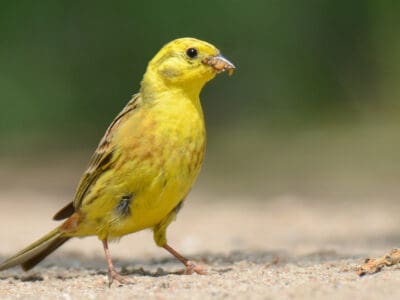
Yellowhammer
It interbreeds with the pine bunting
Austrian Animals List
- Admiral Butterfly
- Alpine Dachsbracke
- Ant
- Armyworm
- Aurochs
- Avocet
- Badger
- Barn Owl
- Barn Swallow
- Bat
- Beaver
- Bed Bugs
- Bee
- Beetle
- Beewolf wasp
- Bird
- Biscuit Beetle
- Black Widow Spider
- Blackpoll Warbler
- Booted Bantam
- Brown-banded Cockroach
- Brown Bear
- Brown Dog Tick
- Bumblebee
- Butterfly
- Camel Cricket
- Carpenter Ant
- Cat
- Caterpillar
- Catfish
- Centipede
- Chamois
- Chicken
- Cicada
- Cockroach
- Codling Moth
- Common Buzzard
- Common European Adder
- Common Frog
- Common Furniture Beetle
- Common House Spider
- Common Loon
- Common Raven
- Common Toad
- Cormorant
- Cow
- Crab
- Crab Spider
- Crane
- Cricket
- Crow
- Cuckoo
- Deer
- Devil’s Coach Horse Beetle
- Dog
- Dog Tick
- Donkey
- Dormouse
- Dragonfly
- Duck
- Dung Beetle
- Eagle
- Earthworm
- Earwig
- Edible Frog
- Eel
- Eider
- Ermine
- Eurasian Bullfinch
- Eurasian Eagle-owl
- Eurasian Jay
- European Bee-Eater
- European Goldfinch
- European Robin
- Falcon
- Fallow deer
- False Widow Spider
- Ferret
- Fire-Bellied Toad
- Fire Salamander
- Firefly
- Flea
- Fleckvieh Cattle
- Fly
- Flying Squirrel
- Fox
- Frog
- Fruit Fly
- Gadwall
- German Cockroach
- Glass Lizard
- Glowworm
- Gnat
- Goat
- Goldcrest
- Golden Eagle
- Golden Oriole
- Goose
- Grasshopper
- Gypsy Moth
- Hamster
- Hare
- Hawk Moth Caterpillar
- Hedgehog
- Heron
- Highland Cattle
- Honey Bee
- Honey Buzzard
- Hoopoe
- Horse
- Horsefly
- Housefly
- Human
- Huntsman Spider
- Ibex
- Insects
- Jackdaw
- Jumping Spider
- Kingfisher
- Ladybug
- Lazarus Lizard
- Leech
- Lemming
- Linnet
- Lizard
- Loach
- Locust
- Long-Eared Owl
- Long-Tailed Tit
- Magpie
- Marmot
- Marsh Frog
- Mayfly
- Mealybug
- Merganser
- Millipede
- Mink
- Mole
- Mole Cricket
- Mongrel
- Moorhen
- Mosquito
- Moth
- Mouse
- Mule
- Muskrat
- Natterjack
- Neanderthal
- Nematode
- Newt
- Nightingale
- No See Ums
- Northern Pintail
- Nose-Horned Viper
- Nut Weevil
- Nutria
- Old House Borer
- Orb Weaver
- Ortolan Bunting
- Osprey
- Otter
- Owl
- Pantaloon Bee
- Peppered Moth
- Peregrine Falcon
- Pheasant
- Pig
- Pigeon
- Pika
- Pike Fish
- Pine Marten
- Pond Skater
- Pool Frog
- Porcupine
- Purple Emperor Butterfly
- Puss Moth
- Quail
- Rabbit
- Raccoon
- Raccoon Dog
- Rat
- Rat Snakes
- Red Deer
- Red Kite
- Redstart
- River Turtle
- Robin
- Rodents
- Roe Deer
- Rooster
- Rough-Legged Hawk (Rough-Legged Buzzard)
- Sable Ferret
- Salamander
- Sand Lizard
- Scorpion
- Sea Eagle
- Seahorse
- Sheep
- Short-Eared Owl
- Shrew
- Shrimp
- Skink Lizard
- Slow Worm
- Slug
- Smallmouth Bass
- Smokybrown Cockroach
- Snail
- Snake
- Snowy Owl
- Song Thrush
- Spadefoot Toad
- Sparrow
- Spider Wasp
- Squirrel
- Stick Insect
- Stoat
- Stork
- Swallowtail Butterfly
- Swan
- Tawny Owl
- Termite
- Thrush
- Tick
- Tiger Beetle
- Tiger Moth
- Tortoise
- Tree Frog
- Turtles
- Ural owl
- Viper
- Vulture
- Wasp
- Water Buffalo
- Water Vole
- Wax Moth
- Weasel
- White Ferret / Albino Ferrets
- Wild Boar
- Wolf
- Wolf Spider
- Woodlouse
- Woodlouse Spider
- Woodpecker
- Woolly Rhinoceros
- Worm
- Wryneck
- Xeme (Sabine’s Gull)
- Yellowhammer
Animals in Austria FAQs (Frequently Asked Questions)
What animal symbol represents Austria?
The symbol of the black eagle has been historically associated with the Austrian state.
What animals are common in Austria?
Austria is home to 80 or so mammal species, most of which are small animals like rodents, rabbits, moles, and bats. Other common mammals include foxes, weasels, badgers, martens, otters, and deer. Austria also contains about 400 species of birds, including plenty of eagles, hawks, ducks, geese, game birds, and songbirds. Turtles, snakes, frogs, and insects are very common as well.
Are there wolves in Austria?
Wolves were originally exterminated from Austria in the late 19th century. But as a result of a deliberate effort to rehabilitate the numbers of Eurasian wolves, they have begun appearing in Austria with more and more frequency in the 21st century. Many of them cross over into Austrian territory from the Balkans, where they are far more plentiful. As time passes, wolves may start to establish a more permanent presence in the country.
Are there moose in Austria?
No, the moose is only present in northern Europe.




